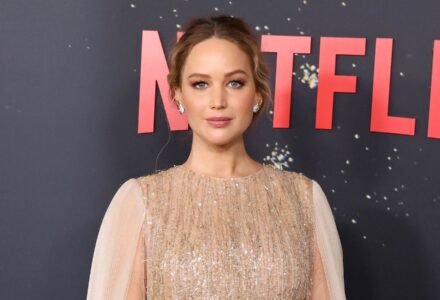Jennifer Lawrence, one of Hollywood’s most acclaimed actresses, recently revealed a surprising confession about her experience working on the 2017 psychological horror film Mother!. Despite being intimately involved with the film’s director, Darren Aronofsky, Lawrence admitted she didn’t fully understand the complex narrative of the movie she starred in.
Renowned for her versatile roles and lauded performances, including an Academy Award win for Silver Linings Playbook, Lawrence has become a household name through blockbusters like The Hunger Games and X-Men. However, her role in Mother! presented a very different challenge — not only as a lead actress but also in grappling with a film that many found perplexing.
Mother! centers around an unnamed woman, played by Lawrence, whose peaceful home is invaded by mysterious strangers. The film’s all-star cast included Javier Bardem, Domhnall Gleeson, Michelle Williams, and Brian Gleeson. While critics gave it a moderately positive reception, with a 68% rating on Rotten Tomatoes, general audiences expressed widespread confusion over the storyline and symbolic layers embedded in the film.
Lawrence’s candid admission during a chat on Watch What Happens Live surprised many. When asked by host Andy Cohen how much she understood the movie on a scale from one to “totally confused,” she laughed and replied, “I’m going to be honest. Well, I was sleeping with the director, so I had the CliffNotes. So, five. Or four?” This honest response highlights just how abstract and challenging the film’s plot was, even for those closest to its creation.
Aronofsky himself has acknowledged that Mother! was meant to be a difficult and provocative film. He described his vision as creating a “punk movie” that confronts viewers and challenges conventional storytelling. The film’s allegorical and metaphorical content has led to diverse interpretations, contributing to its polarized reception.
The relationship between Lawrence and Aronofsky began during the filming of Mother!, but their romance ended just two months after the film’s release. Lawrence has spoken openly about the difficulties of dating the director while promoting the film. In a revealing interview with Adam Sandler, she explained the emotional toll of balancing personal and professional lives simultaneously.
She shared how the press tour created tension, as Aronofsky remained deeply invested in the film, often wanting to discuss it at length. Meanwhile, Lawrence longed for a break from the movie’s intense scrutiny. “I was doing double duty trying to be a supportive partner, while also being like, ‘Can I please, for the love of God, not think about Mother! for one second?’” she confessed.
Her insight into the relationship dynamics adds a human dimension to the film’s production story. Lawrence emphasized how difficult it was to separate her feelings for Aronofsky from the project itself, saying, “It’s not healthy. Neither of us are doing it because if I read it, I start getting defensive. Especially because it’s my man.”
This behind-the-scenes glimpse underscores the complexity of working on a film that is both a deeply personal artistic expression for the director and a public product that requires promotion and explanation. For Lawrence, the experience was a unique challenge—navigating confusing material, a high-pressure press tour, and a complicated relationship all at once.
Despite the confusion surrounding Mother!, the film remains a bold and memorable entry in Aronofsky’s filmography and an unusual, provocative chapter in Lawrence’s career. The actress’s openness about her own uncertainties offers a fresh perspective on the filmmaking process, reminding audiences that even stars at the top of their game can wrestle with the stories they bring to life.
Ultimately, Mother! stands as a testament to the risks and rewards of experimental cinema—where meaning isn’t always clear, and emotions run high both on and off screen. Jennifer Lawrence’s honesty not only humanizes her but also sparks renewed interest and conversation about the film’s enigmatic narrative and artistic ambition.






